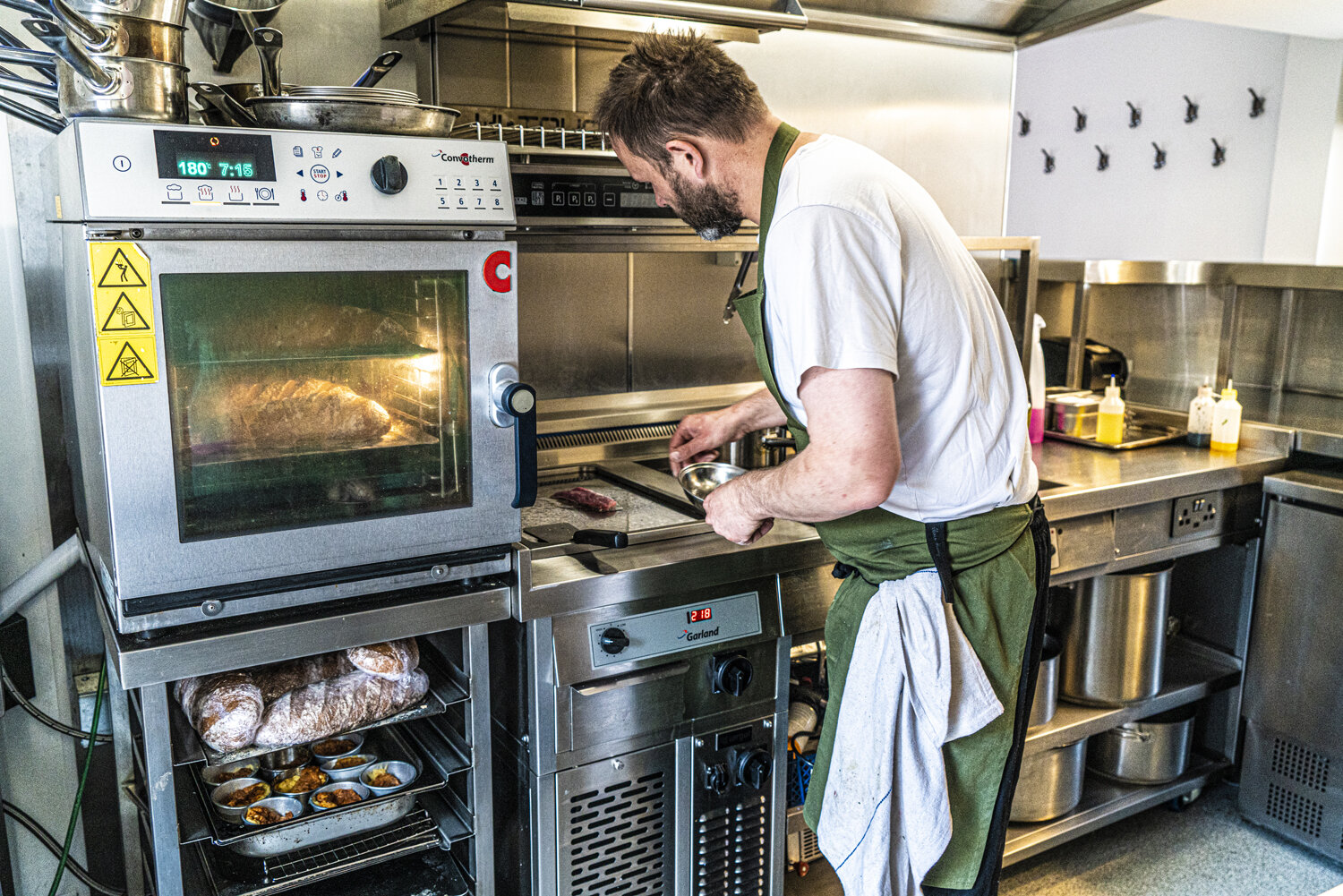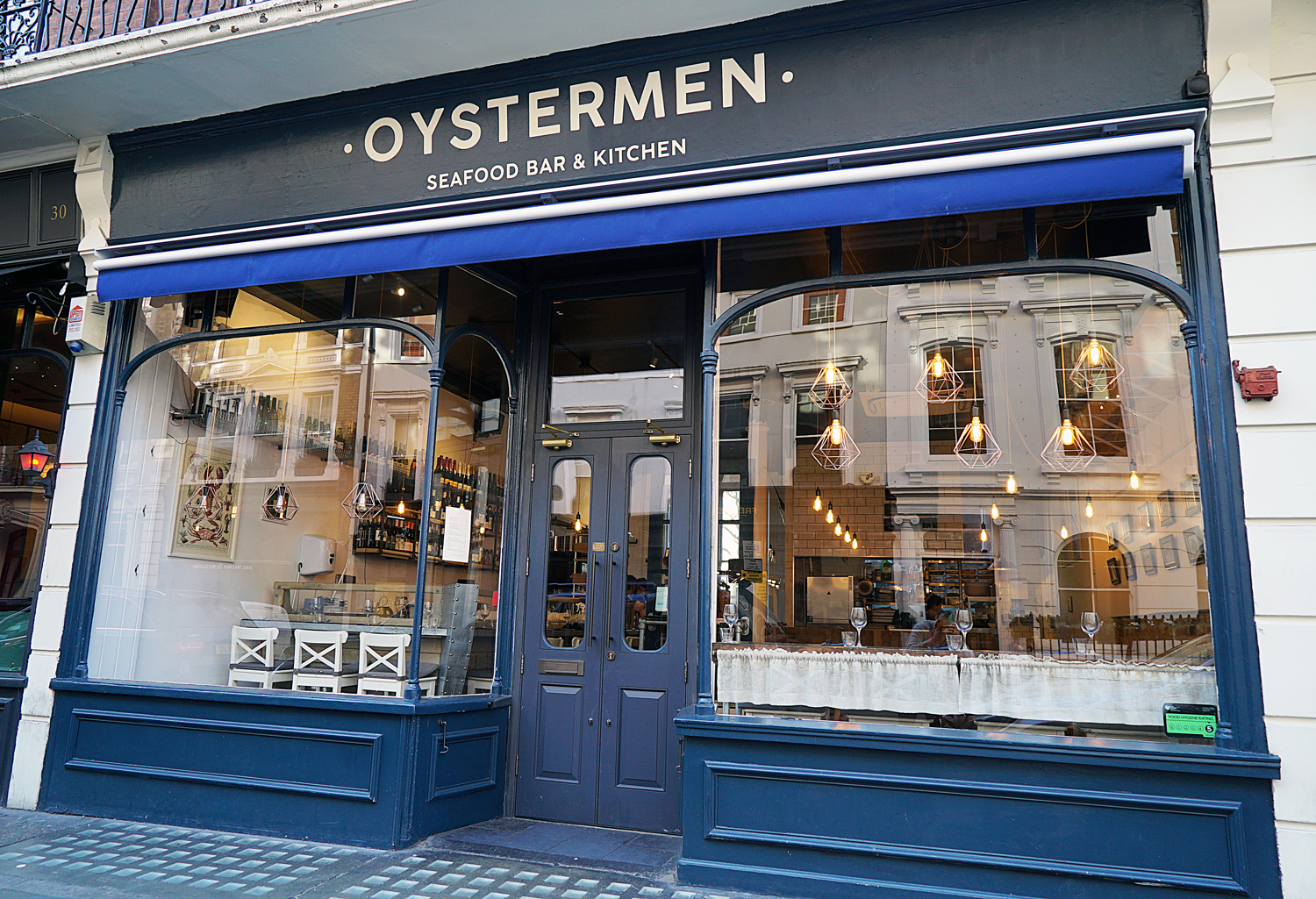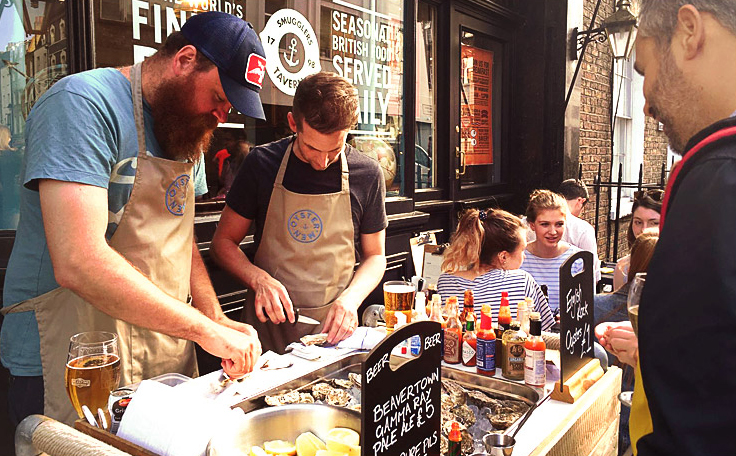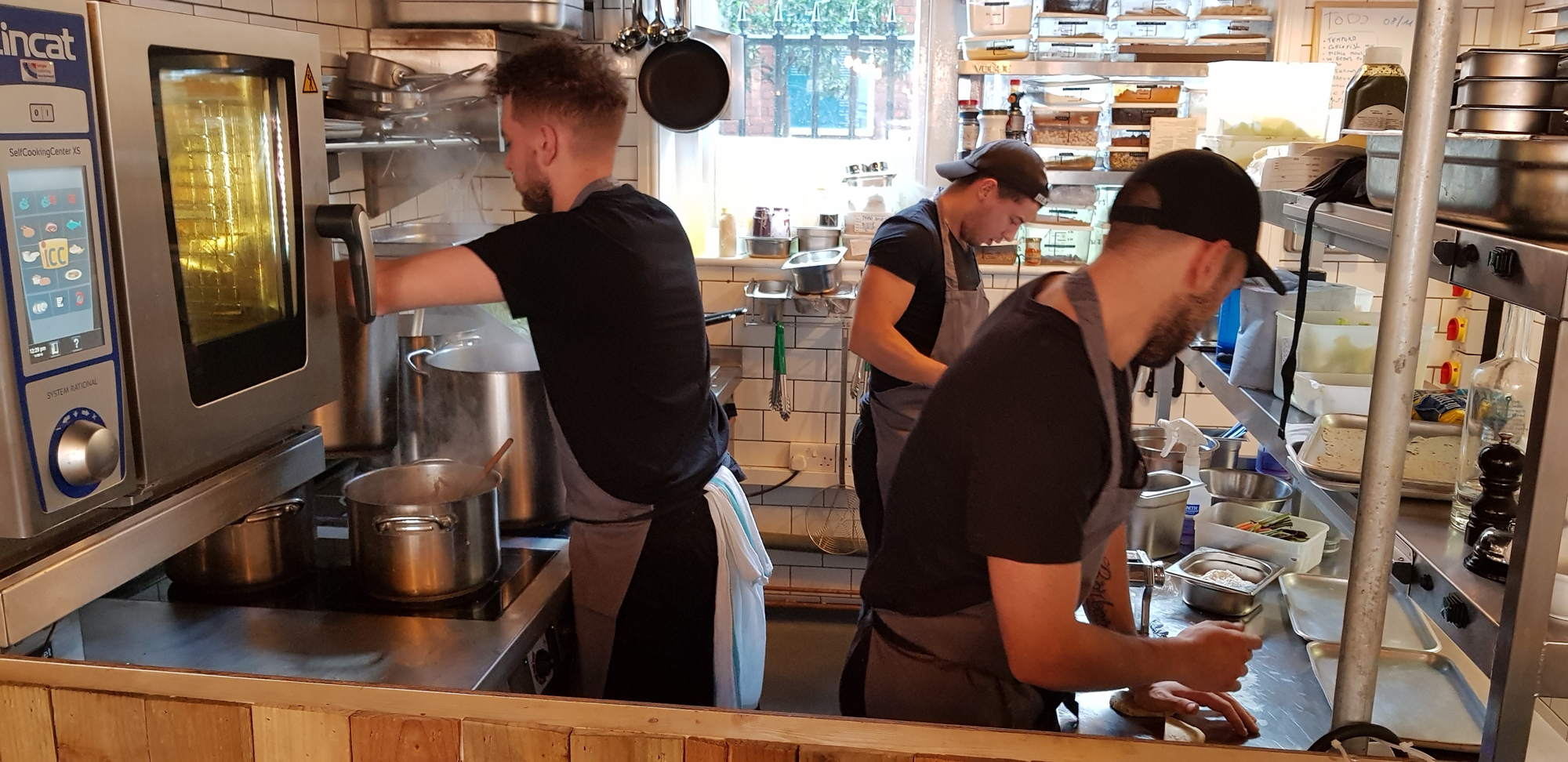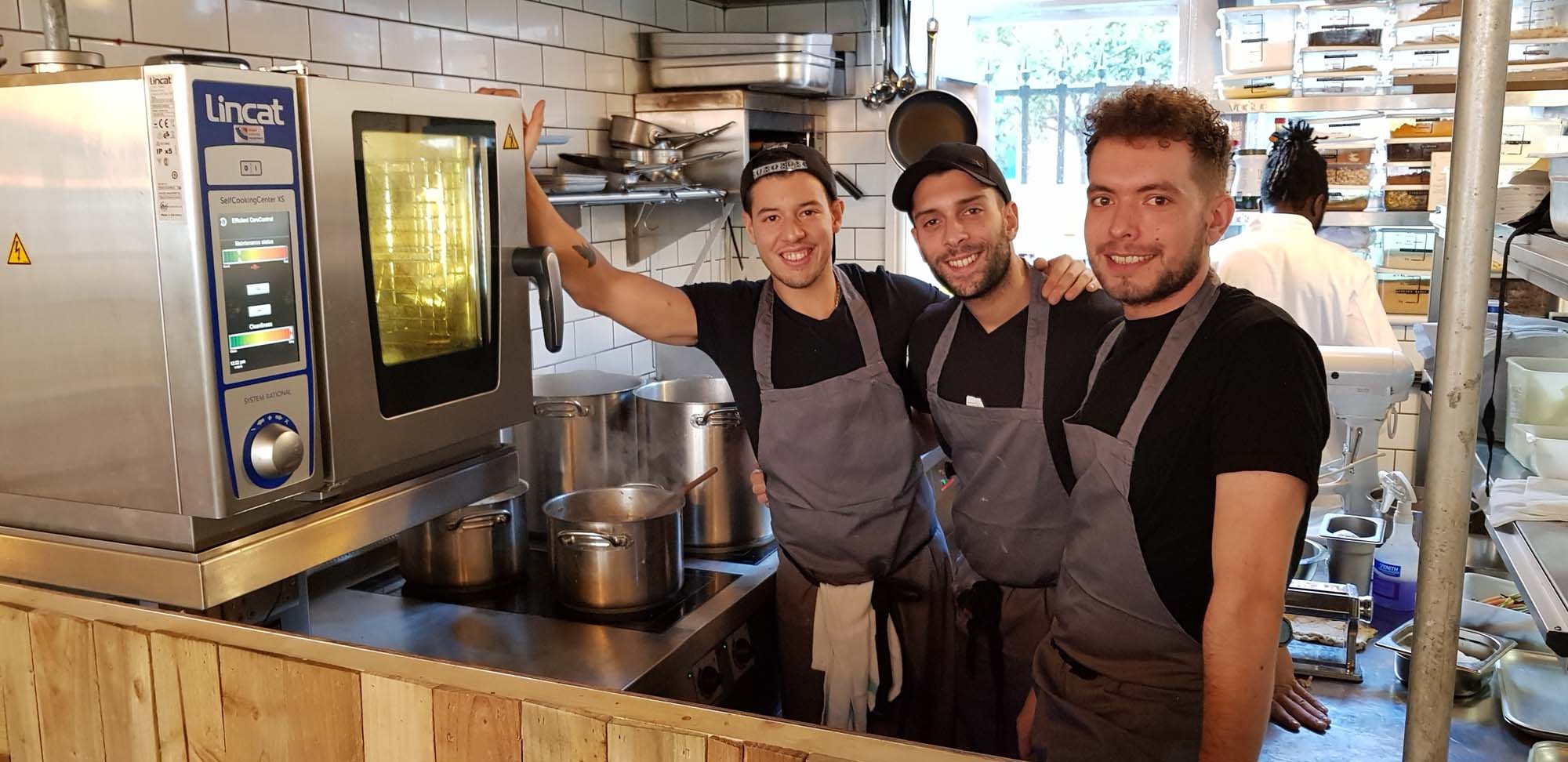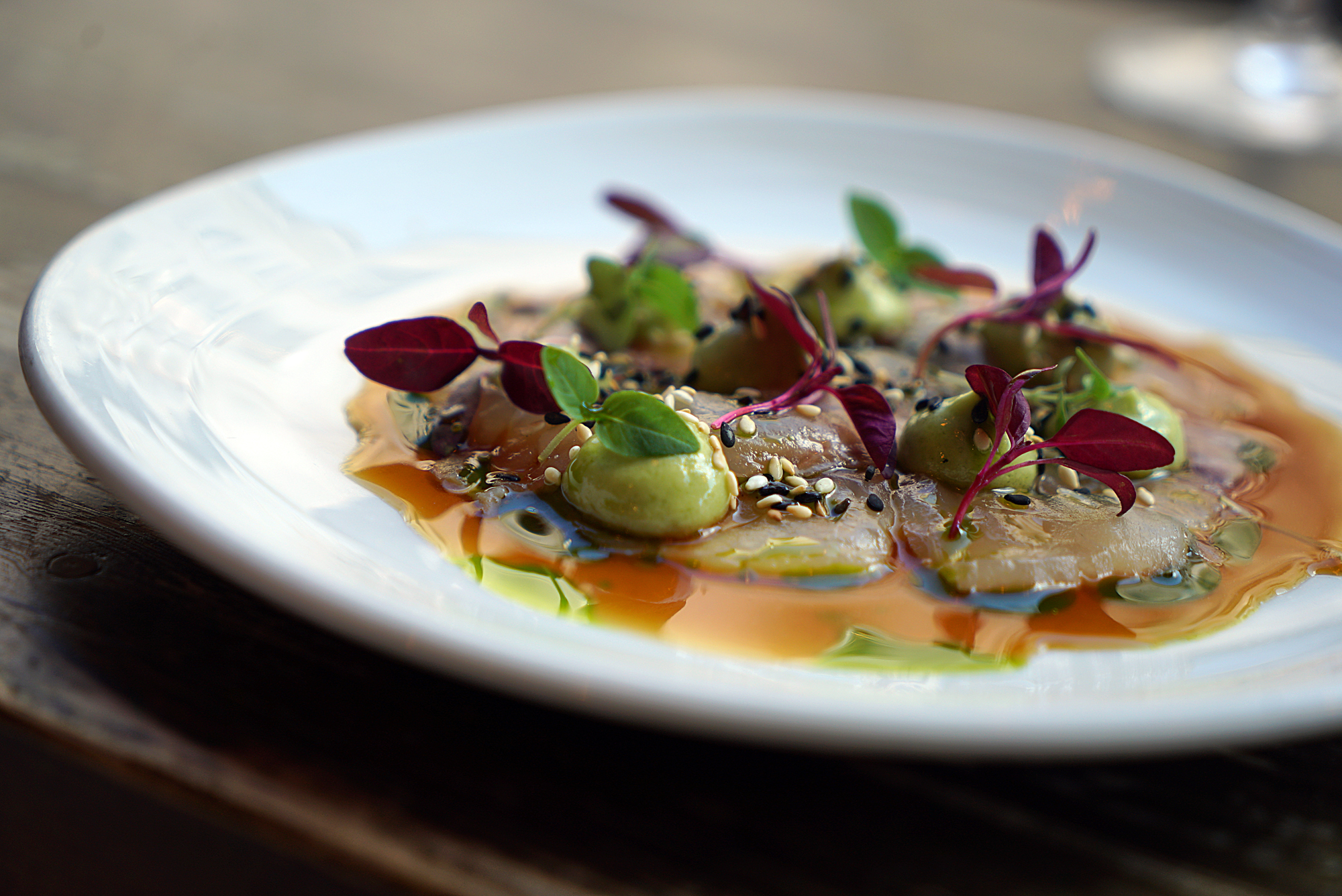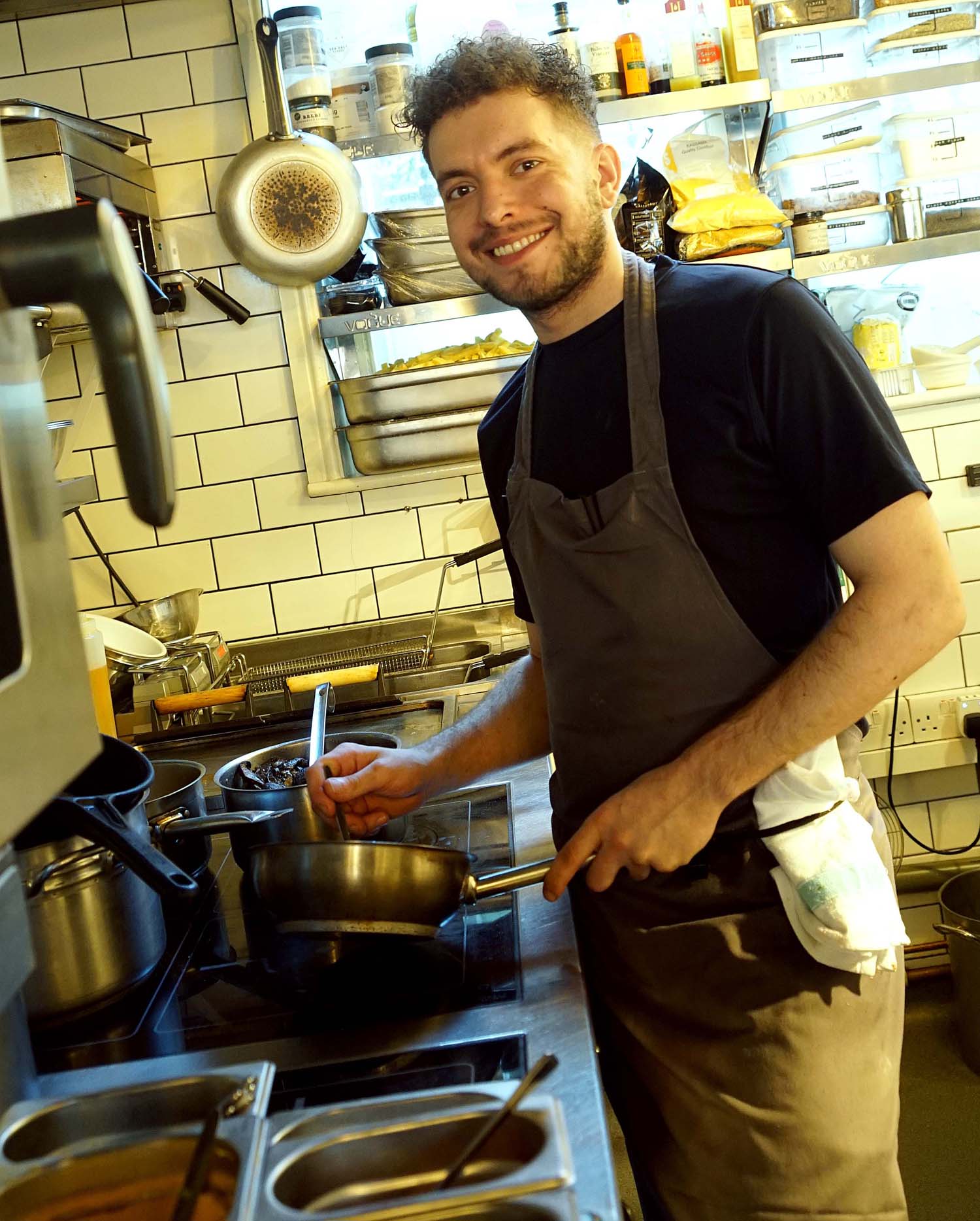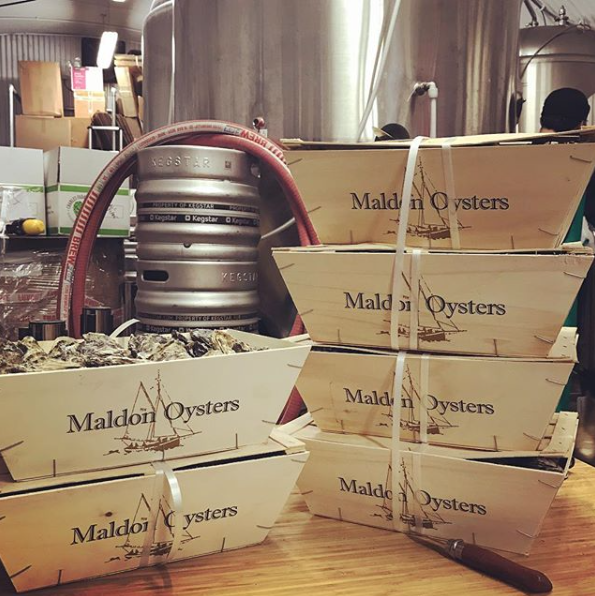Newly Launched Bistro Opts for Induction Cooking To Get Things Fired Up
A newly launched Hertfordshire Bistro is hoping induction cooking will be the difference when it comes to making guests warm to its contemporary offering based on classic British and European cuisine.
The Arbury in Baldock, which opened it’s doors just a few months ago, in a derelict former Greene King pub site, has turned to induction cooking to deliver food for its 40 covers; opting for induction cooking technology over gas as it bids to speed up the cooking process.
Martin Nisbet and partner Lucy Thompson, the pair behind the Arbury, made an enquiry to bespoke commercial kitchen specialists, Target Catering Equipment, about the possibility of introducing induction cooking into their new restaurant having previously worked with gas.
Convinced by the subsequent conversations and a visit to Target headquarters, The Arbury turned to Target for a full kitchen fit out, including the installation of an induction stove complete with induction solid top, induction plancha, fast action salamander grill, extraction system and bespoke fabrication of service hot pass, shelves, dishwasher sinks and tabling.
The whole kitchen was fitted and completed in July 2019 and in the months the bistro has been open, Martin, who operates as effective head chef, pot washer and everything in between, has been experiencing the operational and financial benefits of induction first-hand.
“The power that induction offers is phenomenal,” said Martin. “I don’t have to leave things switched on and can now do things instantaneously so, therefore, the ambient temperature is significantly less.
“I went for induction as it’s the way the modern world is heading, and I wanted to use renewable energy. Also, it’s far more pleasant to work in an induction kitchen all day than gas. It’s easier to clean and we don’t have to deal with gas burning all day. Going with induction was a win-win situation,” he added.
With his new induction kitchen, Martin can switch his salamander grill on whenever he needs it, with the fast action unit reaching full heat within just 4 seconds, as opposed to using a gas grill which would usually have to be left on for the duration of full shifts.
As someone who “hates cleaning”, Martin also benefits from only needing to carry out a simple wipe down of the units after shifts, a stark contrast to the dirty burned on carbonised black environment caused by cooking with gas.
Having saved on time, money and energy by turning to induction, Martin summed up his new pièce de résistance as a nod towards the future of commercial cooking.
“Having worked with gas for many years before opening The Arbury, I’ve noticed a massive difference between the two. It’s quite revolutionary actually and I feel quite emotional talking about it. I can’t thank the team at Target enough for helping me turn my vision into something beautiful.”
David Pedrette, Managing Director at Target Catering Equipment, said: “To hear such fantastic feedback from Martin is wonderful for what we’re trying to do. Induction has so many benefits, especially for smaller operators such as The Arbury where quick turn around and fast heat is essential. We’re delighted that Martin is so pleased and we wish him all the best with his efforts at The Arbury!”
Target is widely known for its commercial induction ranges, which have been recognised as highly sustainable products by industry body CESA/FCSI and the Carbon Trust.
For more information on The Arbury, visit https://www.thearburybaldock.co.uk/
10 Mistakes to Avoid when Buying Kitchen Ventilation
Kitchens can be hot, smelly, smoky places to work at times, so specifying an effective ventilation system is as important as getting the cooking suite or refrigeration right. Here we list what mistakes buyers and specifiers need to avoid making when it comes to securing the best ventilation solutions for their sites.
1. Don’t look upon ventilation as ‘just a box’
In the grand scheme of a big kitchen build it can be easy to trivialise the role that ventilation plays., but with safety legislation to bear in mind and every operator scrutinising running costs it is about far more than just hanging a stainless steel box from the ceiling these days. A correctly designed kitchen ventilation solution will maximise the potential of the cooking equipment that has been specified, provide a comfortable and safe working environment to the kitchen staff, will be economical with regard to the power consumed, will provide minimal nuisance to neighbouring properties and will ensure the operator stays on the right side of legislation and best practice.
2. Don’t assume all sites are the same
Make sure you understand the technicalities of the proposed site you are specifying the ventilation for, especially when it comes to new developments. It has been well-publicised that a lack of suitable A3 premises available - particularly in built-up urban areas - is currently failing to satisfy the expansion appetite of the high street restaurant chains. This has undoubted implications for the type of ventilation systems that can be installed. This shortage has meant that some sites are being considered even though the means of providing suitable ventilation is a major problem. Another point here is the application of space, making it very difficult to sometimes incorporate the necessary units. Specifiers also need to consider positioning of premises and the need to incorporate grease, smoke and odour control equipment. Early consultation with experts in these fields would prevent operators experiencing unnecessary problems.
3. Don’t ignore your surroundings
The hum of a ventilation system working away in the background provides the soundtrack for many a commercial kitchen across the land, but if it’s a front-of-house solution you require then choose something that isn’t going to spoil the environment. The fashion for front-of-house cooking appears not to be diminishing and requires careful design when considering such factors, as noise levels which would be perfectly acceptable in the kitchen, but not in the restaurant. Fans should be quiet and yet powerful enough, so make sure they are the correct size and easy to access for cleaning. Speed controllers can help to reduce energy consumption.
4. Don’t take the approach that ‘one size fits all’
Take time to understand what makes one brand or one piece of technology different from another and explore the smaller details. And once you have done that, try and keep to the specification to improve the chances of the system delivering the results it promises. Understand the difference in quality of the product being specified. Large discrepancies in price will often indicate the offering is not like-for-like.
5. Don’t over specify
It is absolutely crucial not to over-specify on ventilation. If a system is too powerful it will result in wasted energy and higher running costs. Establish what the system needs to be used for at the outset. It’s important to consider the size of the outlet and type of equipment that will be used underneath the ventilation, to make sure the chosen system can cope with the amount of air that’s to be extracted. Look at whether it’s a gas or electric piece of equipment and the level of fumes that will be produced from the unit. More powerful ventilation will be required over items such as chargrills and fryers as compared to induction, as they produce more fumes. You will also need to consider the temperatures that will be produced from cooking processes.
6. Don’t dismiss the finer details
There is a science to ventilation and getting the formula right at the design stage will increase the chances of the system doing what it is meant to. Balance of air within a kitchen area is fundamental, especially with CO2 fumes from gas appliances to consider. It is therefore important to put back into the kitchen the correct amount of supply air as it is to calculate the volume of air that is needed to extract. Even things like the type of filters used to reduce grease carry-over are important to bear in mind. While it is essential to make sure supply air vents are fitted and don’t get blocked, mesh and baffle filters are 96% efficient. We have developed a range of clean air exhaust ventilation systems with built-in disposable grease particulate and odour control filters to be used with induction and/or all electric cooking solutions.
7. Don’t think ventilation systems always lead to big energy bills
The importance of ensuring your kitchen is energy efficient has become a key trend over recent years and with ventilation accounting for up to 15% of electricity costs, it is clearly something that should be at the forefront of every operator’s thinking if it is not already. Ventilation can obviously be switched off when not in use but advances in areas such as variable speed drives and demand-based controls means system management can be taken care of automatically. Quintex offers a demand-controlled ventilation system that uses sensor technology to detect cooking activity levels and lower ventilation fan speeds so that extract rates are matched to cooking demands. This is a highly effective way of optimising energy use. A fan running at 50% of its normal operating speed will only consume 12.5% of the energy required to run the fan at 100% of its operating capacity resulting in significant carbon emission reductions. As less air is extracted from the kitchen when fan speeds are reduced the requirement for conditioned supply air is also reduced.
8. Don’t underestimate the pace of development
There is considerable emphasis from manufacturers on developing greener ventilation that lowers costs for operators. Keep an eye out for the arrival of newer technologies that improve the filtration process and more efficient classes of fan motors as the years progress. Plenty of operators are now feeling the benefits of deploying sophisticated systems. We have seen a significant increase in demand for ventilation solutions which reduce operating costs through either heat recovery of the application of technology which adapts the ventilation to the actual usage requirements in real time.
9. Don’t forget about maintenance
There are strict regulations governing the cleaning of systems relating to the ventilation due to the potential fire risks that arise from fat and grease build-ups. Duct runs should be kept to a minimum where design allows and made as accessible as possible to facilitate periodic cleaning and maintenance. Studies show that the regular cleaning of ventilation units and extractor hood grease filters can increase efficiency by as much as 50% compared with systems that are not maintained.
10. Don’t take legislation and regulation lightly
Forthcoming changes to regulatory guidance, and the arrival of a European Kitchen Ventilation Systems standard demand that specifiers stay on the ball when it comes to compliance. The market is being driven by gas regulations for air quality and the need to find an alternative easier solution in kitchens to comply with regulations and be affordable. The location of all establishments is key, with gas flues and ducts restricting choice and likely to be considerably more expensive because of air quality demands and fire risk.
How Commercial Kitchens Can Be Designed to Support the Mental Health of Chefs
By David Pedrette, Managing Director of Target Catering Equipment
With World Mental Health Day on Thursday, 10th October, there’s been a lot of focus on how businesses can improve employee mental and physical health through their office design, but chefs and those who work in the commercial kitchen industry are often overlooked.
A survey on UK chefs found that 81% have experienced poor mental health during their careers and that nearly half believe not enough is being done to support their mental wellbeing in the workplace.
Research carried out by Nestlé Professional found the top factors currently contributing to stress are staff shortages (58%), lack of time (43%) and limited budgets (42%). The lack of daylight in many kitchens was also cited, with 41% saying it negatively impacted on their wellbeing.
Every commercial kitchen will have different areas causing stress for chefs, whether it be HR issues, or the physical environment. However, there are some basic commercial kitchen design principles which can be followed in order to support the mental health and wellbeing of the kitchen brigade, whilst also considering the need for efficient output of products.
Firstly, how can foodservice businesses generate time and increased profit through kitchen design and product specification? After all, more time means more creativity; the main ingredient to a chef’s culinary repertoire.
The Nestlé Professional research identified creativity as a key factor in reducing stress levels and increasing employee satisfaction, with almost nine out of ten chefs (87%) in agreement that more freedom to be creative in the kitchen would significantly improve their stress levels. However, the vast majority (85%) stated that their creativity is being stifled by other pressures in the kitchen.
Craft Guild of Chefs’ Andrew Green said: “Chefs are highly creative. They are focused on designing food on a plate, pulling together textures and flavours - the rough with the smooth, the sweet with the sour. We need to be encouraging creativity, but all too often it is an afterthought. There’s just not enough time.”
So, how can chefs create more time? Start by considering where time is being wasted, this could be time spent prepping veg, waiting for appliances to warm-up or cool down, post service clean down, or simply walking from one location to another.
Look at the type of fuel that is powering the appliances, typical options being gas, electric or induction. You will find that gas and electric radiant element appliances, such as open burners, solid tops, hot plats and grills will all need to be put on before service and allowed time to come up to temperature. Likewise, the retention of heat in the surfaces will mean cooling down times after service are longer. Hot surfaces also mean food spills will be burnt on and require more effort to clean off at the end of service.
With induction cooking technology, heat is generated instantly within the pan itself meaning there are no heat up waiting times, no hot surfaces for food spills to burn onto and no hot surfaces that need to cool down before you can thoroughly clean the hob post service.
Cooking with induction also means 90% of the energy goes directly into cooking the produce in the pan, compared to just 40% with gas. Therefore, the duration of cooking processes can be more than halved when using induction.
Creating a better working environment will also minimise the risk of physical injury and promote better mental health and wellbeing.
Kitchens are notorious for being fast paced, hot and sometimes volatile places to work in. Demand to deliver quality food in a limited timeframe while working in a high temperature environment with little natural daylight is bound to take its toll on staff wellbeing and mental health.
The right design and specification of ergonomic kitchen equipment can be the foundation for creating a more pleasant working environment for staff.
The World Health Organisation has determined air quality levels in commercial premises. The need for good ventilation to remove fumes from combustion and the cooking processes in kitchens is vital to good health. Noisy extraction fans are another issue. They are not conductive to good concentration with noise levels that can cause stress and physical discomfort not to mention communication difficulties.
By reducing one of the main background noise influences, the kitchen extraction and supply air system, you will in turn reduce noise levels in the kitchen improving communication between staff members and thus bring the kitchen atmosphere to a much calmer level. This reduces stress and allows kitchen staff to concentrate and focus on doing a better job, reducing the risk of accidents and mistakes within the kitchen.
Compared to gas equipment, which needs kitchen extraction systems left on at high speeds in order to remove harmful by-products of combustion, electric and induction equipment create no harmful by-products, meaning extractor fans can be running at much lower speeds to maintain comfortable working temperatures. They can also be turned on and off as and when required, thus creating a much quieter kitchen.
The need for good quality, low energy lighting in a potentially high-risk area such as a commercial kitchen is also of paramount importance. Not only does the quality of light in the workplace impact on the quality of work performance, studies also show that poor lighting can have a detrimental effect on staff health and wellbeing.
When designing the layout of a commercial kitchen it is important to make the most of natural light. Natural light boosts Vitamin D in your body, improves circadian rhythms and sleep patterns, helps us to focus and enables us to get more done. It even makes us happier.
When natural lighting is limited you can consider artificial alternatives, such as LED panel lights. You should also consider the type of wall and floor finish to reflect lighting around the room. There are now new Altro hygienic wall and flooring systems that can make commercial kitchens softer and provide a calmer, more inviting environment to work in.
Overall, a commercial kitchen environment that supports mental health and wellbeing will be more likely to produce a better-quality output, enabling higher business profits and healthier and happier staff.
Top London Seafood Restaurant The Oystermen Switches to Induction
At Target Catering Equipment, we love helping independent businesses find cost-effective and efficient solutions to their industrial catering requirements. Recently, we’ve been working with The Oystermen, a leading seafood restaurant in London’s Covent Garden.
After significantly growing their customer base in 2016, Matt Lovell and Rob Hampton quickly discovered that their seafood street food stall was outgrowing the capacity in which they could prepare and serve their high-quality oysters. Matt and Rob soon expanded into a pop-up concept in South Kensington, before expanding a stage further into a fully-fledged restaurant; The Oystermen - Seafood Bar and Kitchen. Matt and Rob have since developed their offering to feature some of London’s most high-end seafood.
The increase in customers soon resulted in the development of the restaurant, during which Matt and Rob acquired the neighbouring premises. The restaurant was closed for five weeks whilst a large-scale refurbishment took place. This re-design involved a complete renovation of the kitchen area - for which, Matt and Rob sought the help of our team at Target Catering Equipment after meeting us at a catering trade show in Birmingham.
The team at The Oystermen requested an upgrade to induction technology from gas in order to make cooking for large numbers an easier and more efficient process. In response to the brief we were given, we began to design and build an integrated cooking suite, which included an induction plancha, fryer and SelfCookingCenter XS. We also included in the suite special induction stockpot boiling zones, and a high-level filling tap, both of which are used specifically for the cooking of seafood in large stockpots.
The commercial induction range also incorporated a solid top induction hob, suitable for multiple small pan use, and an induction plancha griddle that allows for delicate and direct cooking. The design also included filtration deep fat fryers and specialist fish refrigeration drawers. In addition, a specialist hot and cold pass that featured a heated gantry and pass-through refrigeration was also designed and manufactured.
In particular, the induction unit, has allowed the team at The Oystermen to serve guests much more quickly, which has become especially useful in the West End, in which there are a high number of pre-theatre diners.
Since installing the new Target bespoke induction suite, the chefs have experienced far fewer burns, and cleaning has become an easier task. Overall energy efficiency has also improved, having both financial and environmental benefits for the company.





